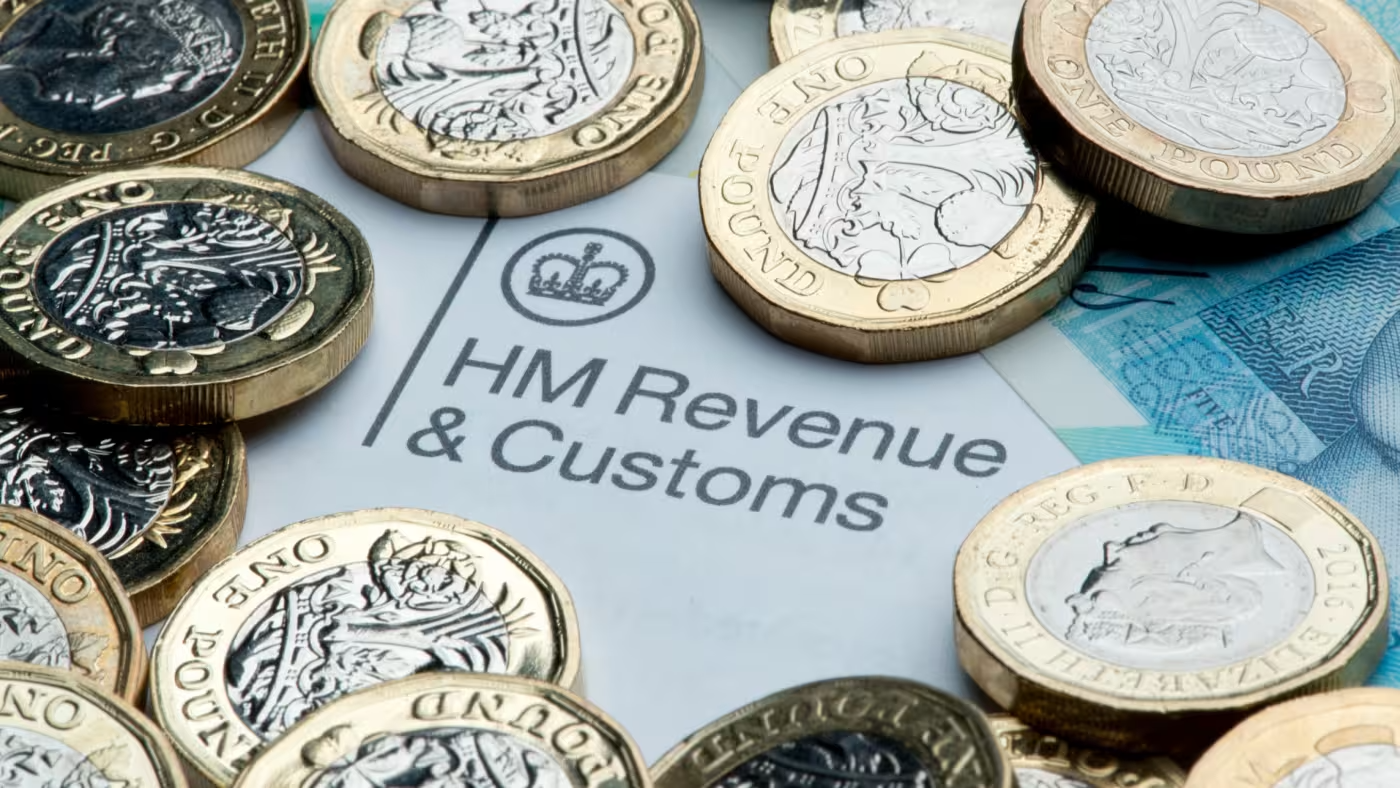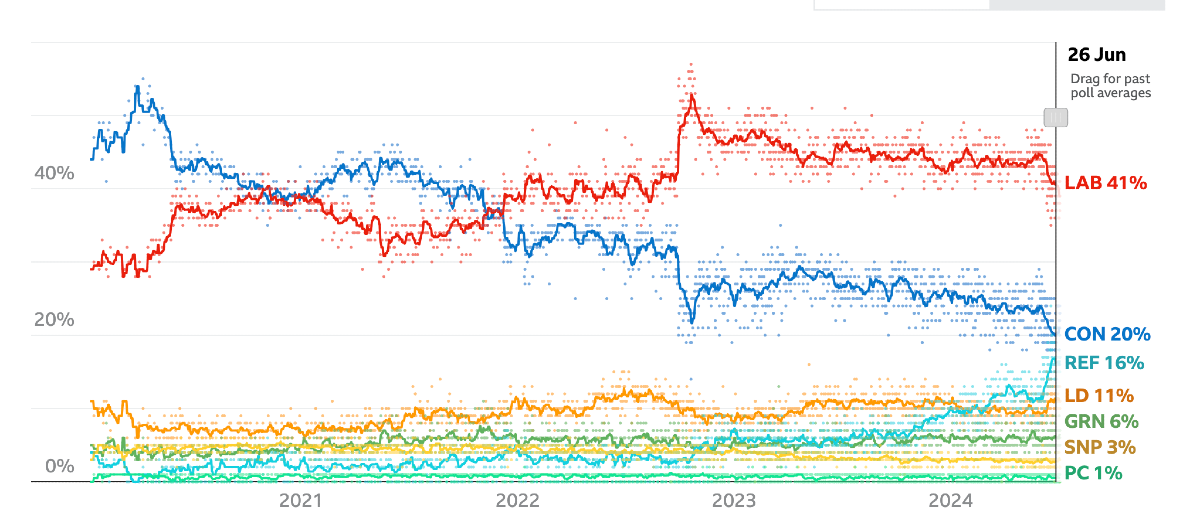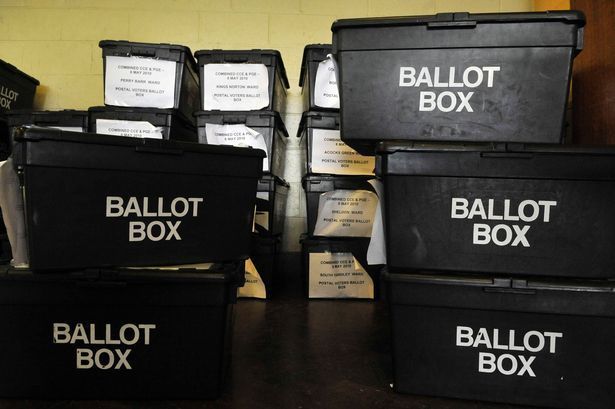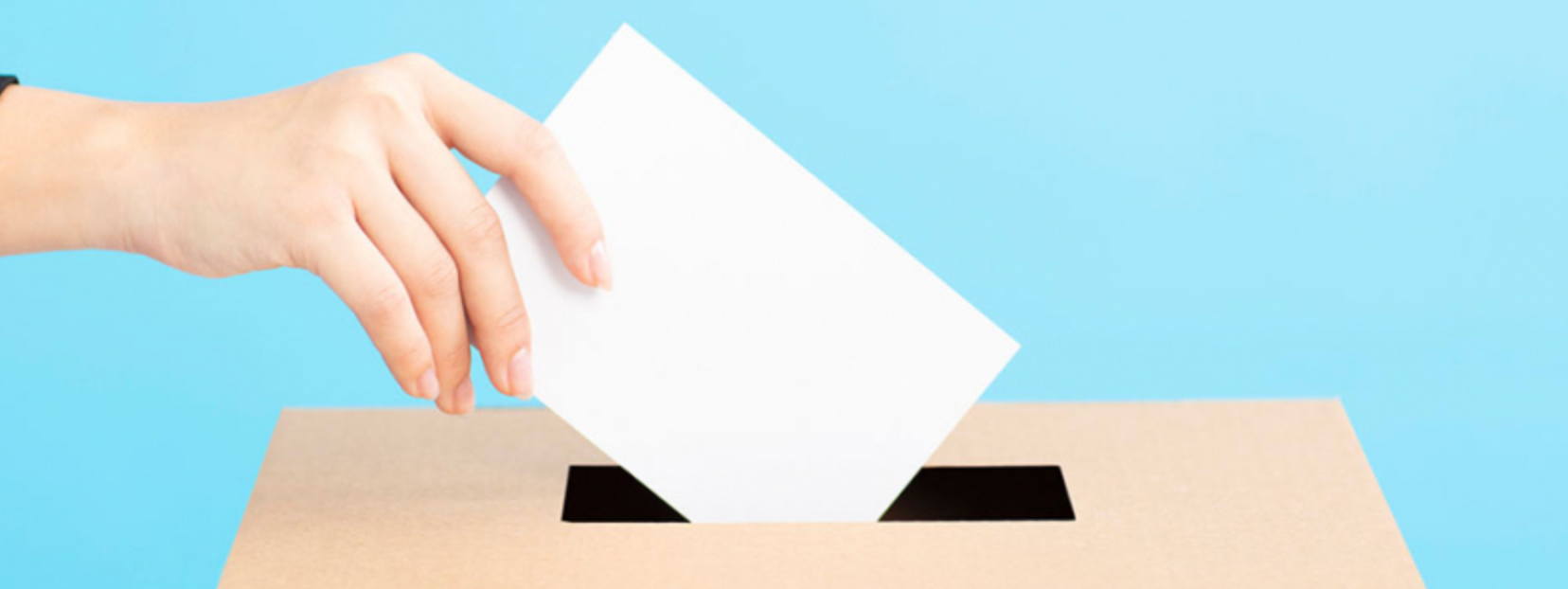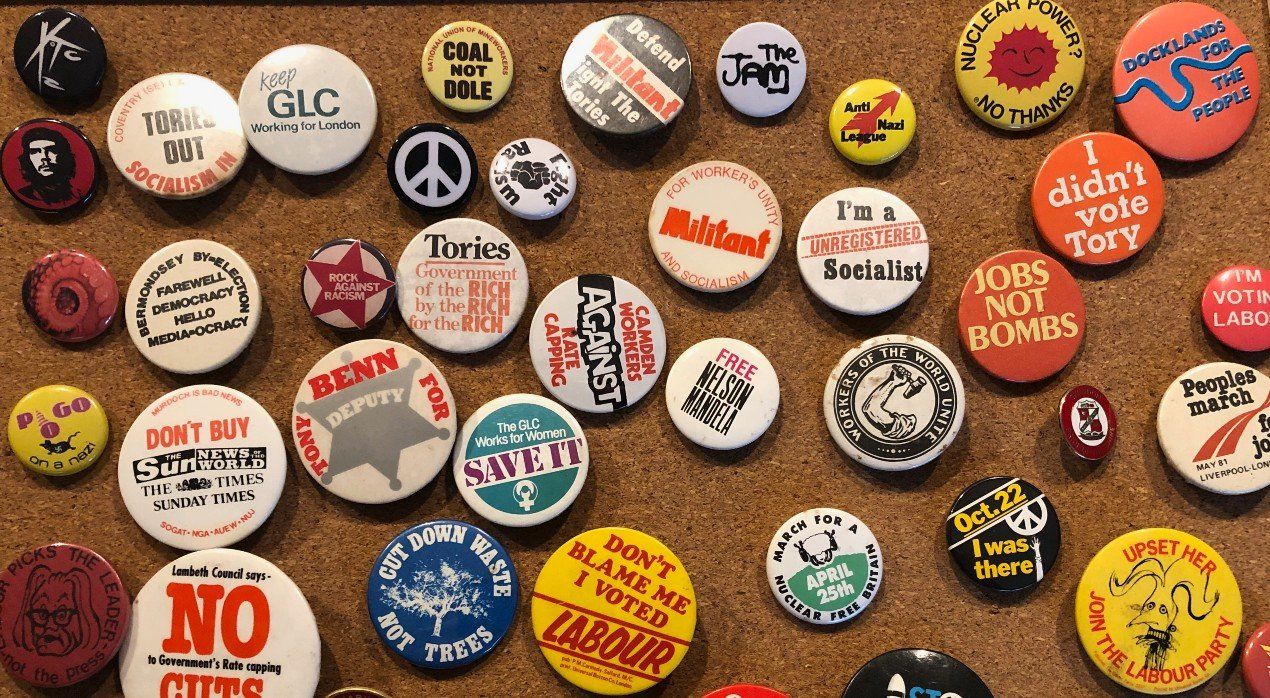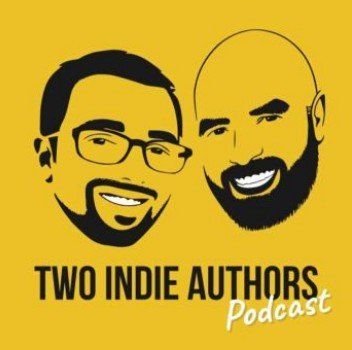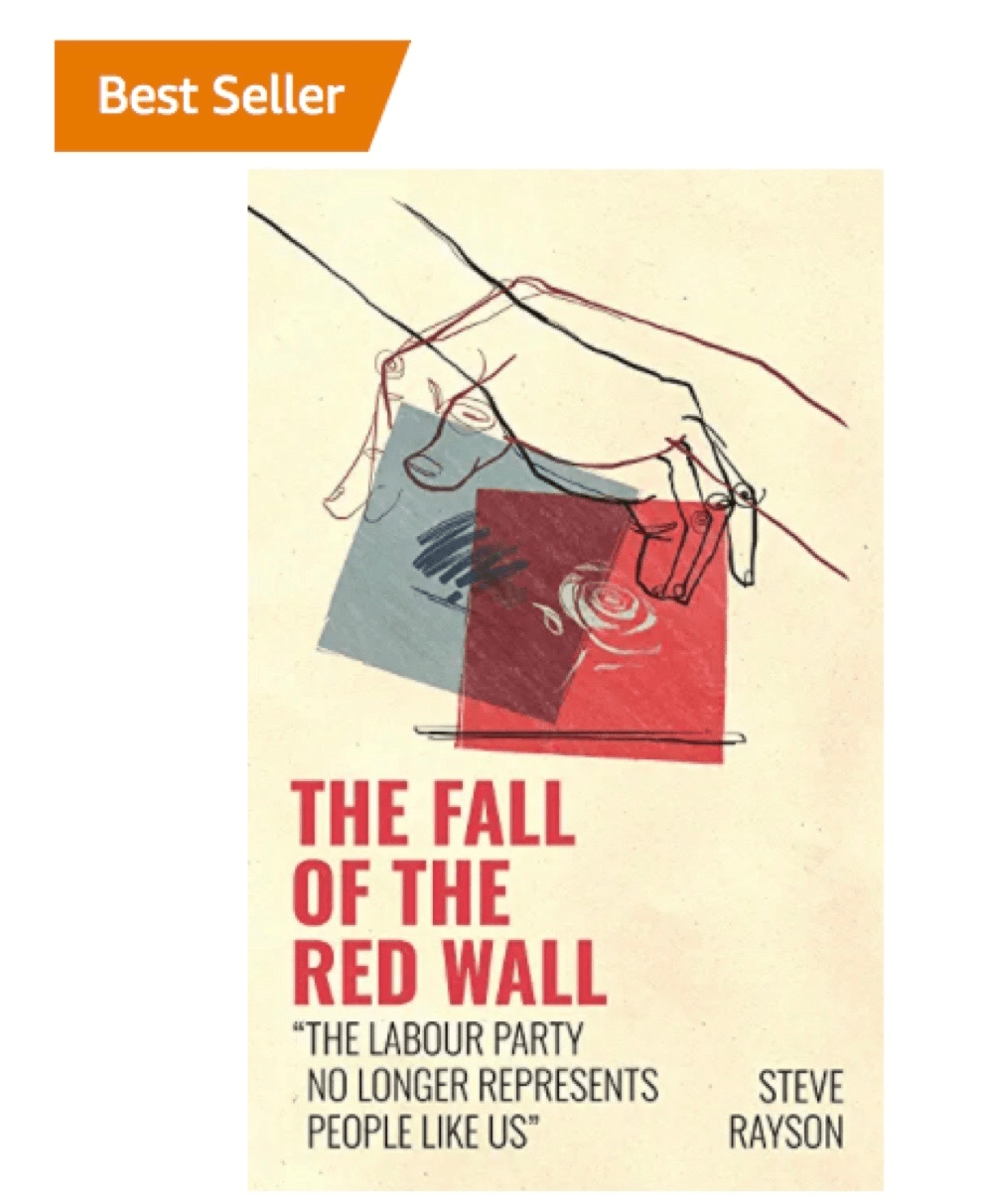How to develop a Marketing Plan as an Indie Author
One of the biggest challenges facing Independent authors is marketing. So many of us like to write but shy away from self-promotion and marketing. Unfortunately, if you are an Indie author a solid marketing plan is as important as the book itself. No one is going to buy your book if they are not aware of it.
I have set out below how I have approached developing a marketing plan for my upcoming book Badgeland. I started putting this plan together three months before the launch of my book. I think in retrospect I should have put this together much earlier and thought about how I would market the book at the very start of the writing process.
1. Audience
You need to understand the audience for your book. I started writing my latest book for my grandchildren. I didn’t really think about who might buy the book. It was only when I finished writing that I reflected on the potential audience. Ideally you would think about this a lot earlier than I did.
My book is a blend of memoir, politics and social history. My thoughts on the potential audience included:
- People who grew up at the same time as me, and particularly those who were also in the Labour Party Young Socialists and wore the same protest badges.
- People interested in politics, specifically Labour Party and left politics in the 1980s.
- The book is set in Swindon, the University of Bath and in the Greater London Council. Thus it might also appeal to people who live in Swindon, who were or are students at the University of Bath, or who worked at the GLC.
- The book is a memoir and might also appeal to people interested in coming of age stories.
- Finally, the book is about social mobility and my transition from a working-class lad in Swindon to a London graduate and ultimately an entrepreneur. So it might appeal to people interested in these topics.
2. Where does your audience hang out and what do they read?
If you are to get your book in front of your audience you need to know where they hang out.
Each of the five audiences I have listed above might hang out in different places. After some searching I found there is a niche Facebook group for people that were in the Labour Party Young Socialists in the 1980s. I also found much bigger groups interested in Swindon and Bath University. On Reddit there are many communities dedicated to the Labour Party which might be interested in my story. On Twitter I managed to search and find people who were also active in the Labour Party in 1980s and a few who also worked at the GLC. I am planning to post or advertise to these audiences to see if I can tempt them to try my book.
The audience for my book will include the readers of similar books such as ‘Things Can Only Get Better’ and ‘No One Round Here Reads Tolstoy’. Thus one option is to buy Amazon ads and ensure my book appears alongside those books.
A large section of my audience will read left publications such as The New Statesman, Left Foot Forward and Red Pepper. Thus I will pitch my book to them and seek a review.
It is highly unlikely but I will also pitch my book to major publications and newspapers. If you don’t ask and all that.
One section of my audience will probably read the Swindon Advertiser, while another may read the Bath Echo or Bath Chronicle. Thus it will be worth pitching my book to these publications for review.
3. Core Marketing messages
Once you know your core audience you need to draft key marketing messages that will appeal to this audience. This starts with the title and particularly the sub-title of your book.
You can review the book descriptions of similar books and analyse what keywords and phrases they use.
One way to sharpen your focus is to write the Amazon book description and back cover blurb for your book. Ideally this should be 200 to 250 words. It needs to start with a hook to draw the reader in and finish with a paragraph which explains what the book is. It’s core purpose is to sell the book, not summarise it. I have written a separate post on how I developed my book blurb.
You can also read reviews on Amazon and GoodReads to see how reviewers describe the book.
4. Keywords
What keywords are your audience likely to search for? This is closely linked to your core marketing messages.
I started by reviewing reviews of similar books and considering the words and phrases they use. Some of the keywords I identified were Labour Party, working-class, social mobility, coming of age, 1980s and memoir.
I drew up a shortlist of possible keywords, Amazon allows you to use seven, and then I analysed these using Publisher Rocket to assess how many times they are searched for each month and how competitive they are. Publisher Rocket uses a scale from 1 to 100, with a 100 being the most competitive. The results for my keywords were as follows.
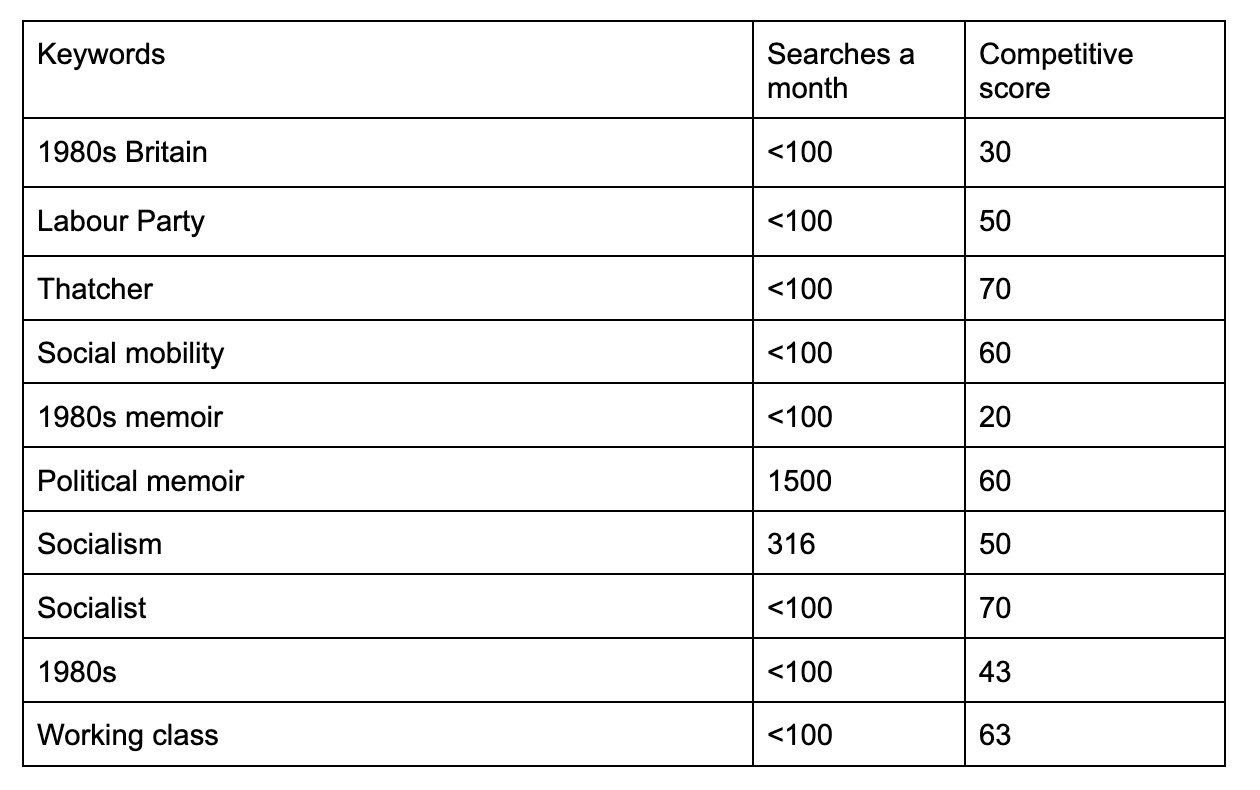
Based on this analysis I ruled out keywords such as Thatcher and Socialist which had less than 100 searches a month and were quite competitive.
5. Launch team
The best advice I received when thinking about marketing my second book is to put together a launch team. It was something I neglected to do for my first book.
At its most basic level a launch team are friends and family who will support your book launch. Ideally they will read an early draft of the book and give you honest feedback. At launch they will buy the book, post reviews, spread the word on social media and recommend the book. This should help give you some initial momentum.
Joanna Penn recommends having a launch team of 120 people. I am not exactly Billy No Mates but I didn’t have 120 people I could ask to join my launch team.
It is important to keep in regular contact with your launch team. You can do this by sharing updates on your progress, publication date, launch events, sharing ideas for the cover and even seeking feedback on the title, sub-title and book description. You can also provide them with images that they can share on social media or ask them to post pictures of them reading the book.
I intend to provide my team with signed copies of the book and invite them to my launch events.
6. Author website
You need to create an author website if you do not already have one.
I started by buying the domain steverayson.com and put up a simple site using tools from my domain company. This included a homepage, a page about my books, a page about me and a news page.
I decided to add a blog. I knew it would be a lot of work but I felt I did have experience as an Indie author that might be helpful to other authors which I could share. It also gave me something to post to social media and include in emails. You are reading one of my first blog posts.
You can also claim your GoodReads author profile and add their author widget to your website. On balance I have decided not to do this currently, maybe I will when the book is out there and has reviews.
7. Email list
All the Indie authors I have listened to say that the most important thing you can do as an Indie author is to create and develop an email list.
I put together an initial list of the emails of my friends and family who I thought might be interested in the book. I then put a form on my author website offering an early digital draft of the book for those that signed up with their email which I promoted with a LinkedIn post. My intention is to also promote this later on Facebook and Twitter.
Some authors talk about reader magnets to collect email addresses. In essence this is offering something for free if they sign up with their email address. It could be a guide or a bonus chapter of your book. Many authors recommend including this at the end of your book, along with a ‘thank you for reading’ note and a request for them to post a review on Amazon.
To manage my email list I signed up to the free version of MailChimp and uploaded my email list to this site. I also created a landing page with MailChimp where people could sign up for my list. I was unsure whether to promote this page. It has the advantages of automatically adding people to my list but on balance I decided to send people to my website where there is a sign-up form. I felt this had the advantage of allowing people to browse my site but this may be unfounded, I am not sure if people browse websites any longer. If people just want to sign up for an advance copy or to join my launch team, it is easier and cleaner with the MailChimp landing page.
The advice is to keep in regular touch with your email subscribers but I have been unsure about sending people unnecessary emails. I am thinking of sending an update before Christmas on what I have been doing and my plans for the launch. Then in January I can send one about the launch events themselves and of course an email when the launch takes place in February.
8. Tease the cover design
The cover of your book should entice people to want to read your book. It is important to engage a graphic artist or cover designer. It is essential you do this as a professional Indie author. To me being an Indie author still means producing a book that is as professional as one produced by a publisher. Hence, you will probably need to engage a cover designer, an editor, copy-editor and proofreader, unless you have particular skills in these areas. It should be noted that it is impossible to proof your own writing.
I was really pleased with my cover, designed by the talented Kate Chesterton. It has images of the badges I wore as a young radical which aligns with the title of my book Badgeland. It is visually striking and will hopefully be immediately engaging with people that wore the same badges.
Once you have a cover design you can share the cover ideas on social media and with your email list. Seek feedback and try to engage people in the process.
9. Get early reviews
Once your book launches you need to get book reviews, particularly on Amazon. Encourage your launch team to rate your book on Amazon and to post an honest review. As I mentioned above you should also include a tank you note at the end of your book which asks readers to post a review.
You also want to get reviews on GoodReads and blogs/journals that your audience read. I prepared a list of 60 journals, blogs and review sites and wrote to them offering the book for review two months prior to publication. So far four have come back to say they will review the book.
There are also a range of paid review sites that will review your book and provide you with a written review. You can use these reviews as part of your publicity and some will also publish the review. I have decided not to pay for a review at this time but I am paying for a Blog Tour where five or six book bloggers review the book. I am hoping to get some useful quotes from these blogs in due course.
I mailed some high profile politicians about my book and a few actually read it and one gave me some quotes that I could use in my marketing which was fantastic and more than I ever expected.
I have written a separate post on seeking reviews as they are so critical to your success.
10. Seek interviews and speaking opportunities
You should offer yourself up for interviews to relevant publications, blogs and podcasts.
I also decided to contact local newspapers, to see if they were interested in covering the book. So far I have had one response from a journalist in Swindon.
11. Advertising
I set aside some money for an initial advertising campaign at launch. I decided to start with some Amazon and Facebook adverts. On Amazon I aim to target similar books to my own and on Facebook I plan to target specific communities and older people interested in politics.
There are whole books written about advertising on Amazon. I think the key to advertising is to try various approaches, monitor the results closely and adapt to what works.
12. Social media
It is important to have a plan for social media.
You should start by building relationships. Initially you should share the content of your supporters, potential reviewers and similar authors. You should start by thinking what you can do for them? Only once you have actively supported people and engaged with them should you seek their support.
I decided to share my book cover and these blog posts on social media. If my posts were about being an Indie author I decided to use popular writing hashtags such as #indieauthor #amwriting #writerproblems #writerslife #memoir. If the post was about my book I decided to use the hashtag #badgeland.
You should ask your launch team to share the book on social media and recommend it to their friends. Provide them with images that they might want to share and encourage them to use your book hashtag.
Ask them to help with quotes by saying what they enjoyed most about the book. We might be naturally reticent as writers but it is important to ask your launch team how they can help share and spread the word.
13. Promotional sites
Once the book has launched I will have a look at BookBub and other promotional sites such as Reedsy Discovery. For a fee BookBub offers its large email audience discounted books. Everything I have read suggests that the returns can far exceed the initial fee. It is something I may try once the book is launched.
14. Merchandise
I decided to get my graphic artist to help me produce some book merchandise such as mugs, bookmarks and coasters. They make a fun prop for social media images and can also be used at events.
13. Videos
Many authors swear by promotional videos and produce book trailers. I wasn’t sure this was really me and I haven’t yet produced any promotional videos.
14. Book quotes and snippets
Identify quotes and passages from your book that can be used as promotional material, such as on social media.
15. Keep reviewer quotes
Keep a document with all the positive feedback from your reviewers, whether these are emails or reviews posted on Amazon.You can use these in promotional materials, particularly if you get positive feedback from a respected author or reviewer.
Even if you never use the quotes, reading this document will make you feel good on the darkest of days.
16. Create an author brand
Listening to marketing podcasts many authors say you must create an author brand. I find it difficult to think of myself as a brand. I preferred to think of my book title as the brand and I aim to market the book like a product. Maybe in time I will overcome my reticence on this matter.
I hope these thoughts on marketing have been helpful.


